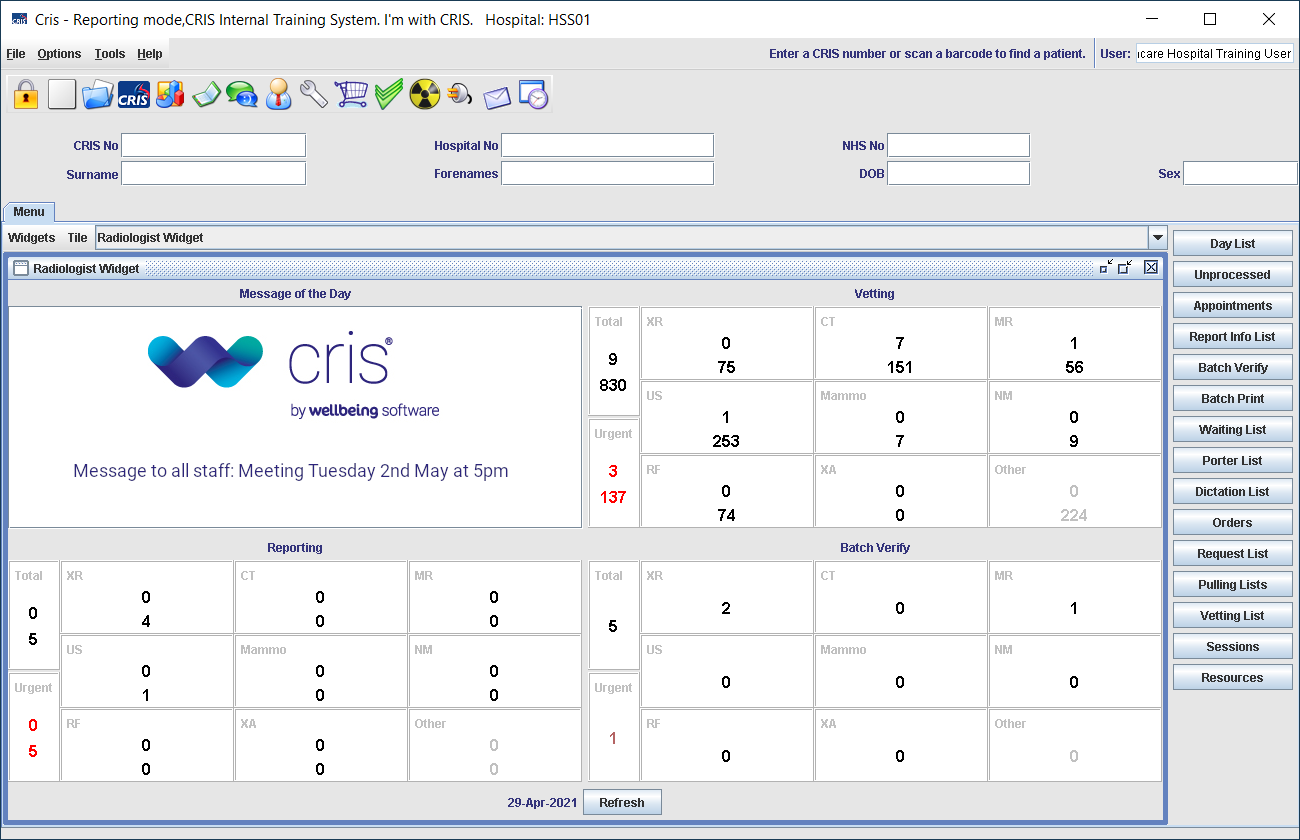Alarms tables
Alarms are warnings on the patient record. They are unique to Cris and not linked to alarms on other hospital systems.
Configure alarm codes; names; types; and severity in Other > General > Alarms.
Define alarm types in System > Limited Tables > CRISALARM.
Warning:
You should contact your Trust IT Help desk, or Prime Contractor Help desk, before making any changes to shared tables. Customers with support contracts can contact us directly.
Note:
The red alarm icon ![]() in the patient banner flashes for Reaction, Special Case, or Warning types. The icon is static for Information type alarms.
in the patient banner flashes for Reaction, Special Case, or Warning types. The icon is static for Information type alarms.
| Field | Description | Example |
|---|---|---|
| Code | Category of alarm. Choose from a list of options. These can be configured by an administrator. | Allergy |
| Type | Type of alarm (Info, Reaction, Special Case, or Warning). | Reaction |
| Summary | 30 character free-text field. | Penicillin |
| Text | 100 character free-text field. | Allergic reaction to Penicillin. |
| Severity | Numerical value. | 2.0 |
Note:
You can edit the item details, or add a new item to a table.
The Description field is used to explain the purpose of the table.
If Preserve Local Values is not selected, Cris updates will overwrite your table.
Tip:
We recommend clicking Tools > Refresh Tables after editing system settings / tables to ensure that all changes are applied.
Example:
The alarm CNG (Consent Not Given) tells Cris users that a patient has declined contact by mobile phone which is used by, for example, Communicator to send appointment reminders.
System Administration: System settings
Reference field to configure MOTD, restrict ordering.
Configure letters, printing. We recommend Letters training before amending these settings.
Define menus with more options - dose types, modalities, foetal presentation.
Define menus with finite options - alarm types, Yes / No fields.
Configure Licences for additional modules and Destinations for sending events or reports.




































